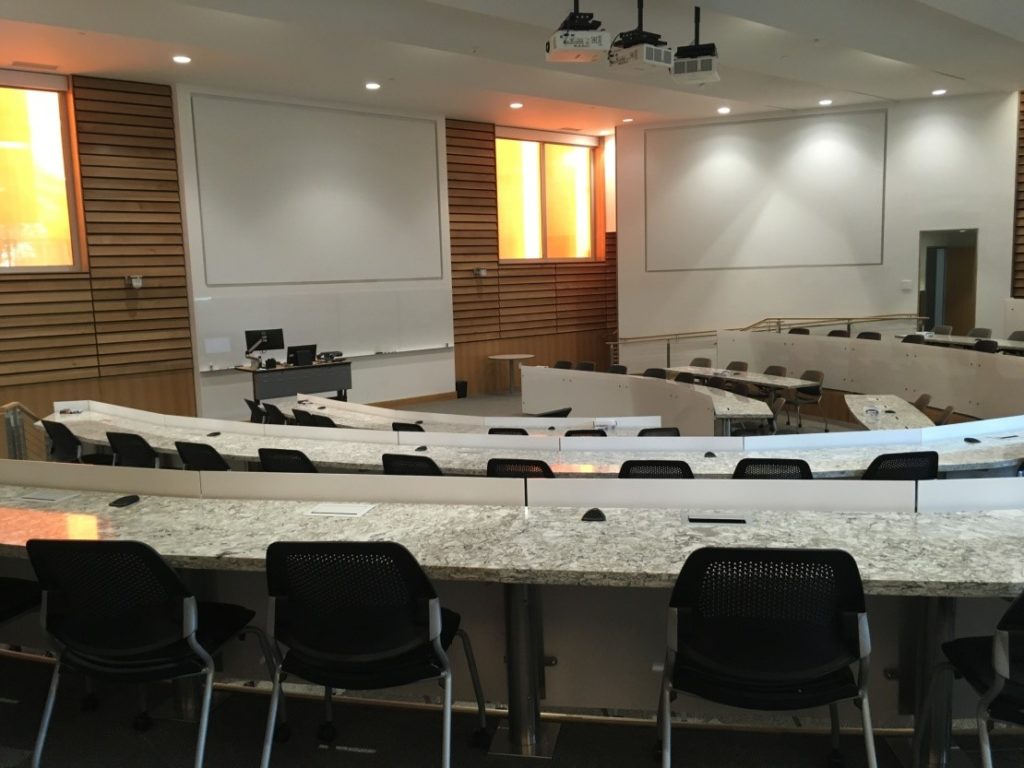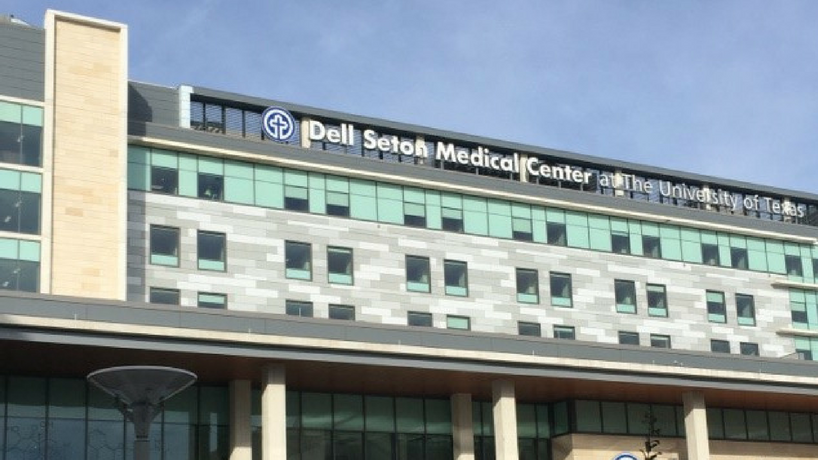Author: Havovie Suraliwalla, BTM
The Dell Medical School at The University of Texas at Austin, is the first medical school built in nearly 50 years from the ground up. We experienced first-hand how modern architects combined environment, technology and space to create this new learning environment for the next generation of physicians. Diving deeper into the ‘space’ component we saw a great example of how an ordinary classroom has been transformed into a state-of-the-art facility conducive to collaborative learning and knowledge transfer.

On the surface this may look like a sleek classroom, which it is by all means. Upon closer inspection, one notices the details. The interactive 120-seat auditorium represents the future of Medical education. Pharmacy and Nursing students learn alongside medical students in the thoughtfully designed space that blurs the line between formal instruction and independent study. Seating is configured to be flexible – students can face an instructor or turn to convene in small working groups and collaboration on ideas, and problem solving. The divider boards between each tier of seating are actually giant whiteboards to facilitate group work and to jot down ideas, and mind map creative solutions. Acoustic panels hang from the ceiling. Between each pair of seats a microphone is embedded into the desk to encourage active participation and discussion. When items such as power sources and ergonomic seating became the norm, Dell found ways to further enhance and improve their learning spaces.
Another cutting edge resource for students was the Virtual Library on the third floor. The virtual library provides a place for quiet study, along with electronic access to all the resources of The University of Texas at Austin Libraries. It will allow students to easily access this resource without leaving the Health Learning Building. This space also provides copy machines, printers and other office supplies for their needs.
The multi-purpose Teaching Lab found on the fifth floor features the Sectra Visualization Table, a technology only a few medical schools have. The sophisticated image display system allows interaction with 3D human body images rendered from CT or MR. Additionally, the Sectra allows for virtual dissection and the study of human anatomy, enabling our the medical students to achieve a better understanding of cross-sectional anatomy, variations between individuals and a greater knowledge of pathology and rare diseases.
I left Dell medical school thinking: I want my doctor to have learned medicine here! We as planners and suppliers can learn from trailblazers such as Dell Medical School and fearlessly ask the question: What more can we do for our meetings to facilitate greatness?





